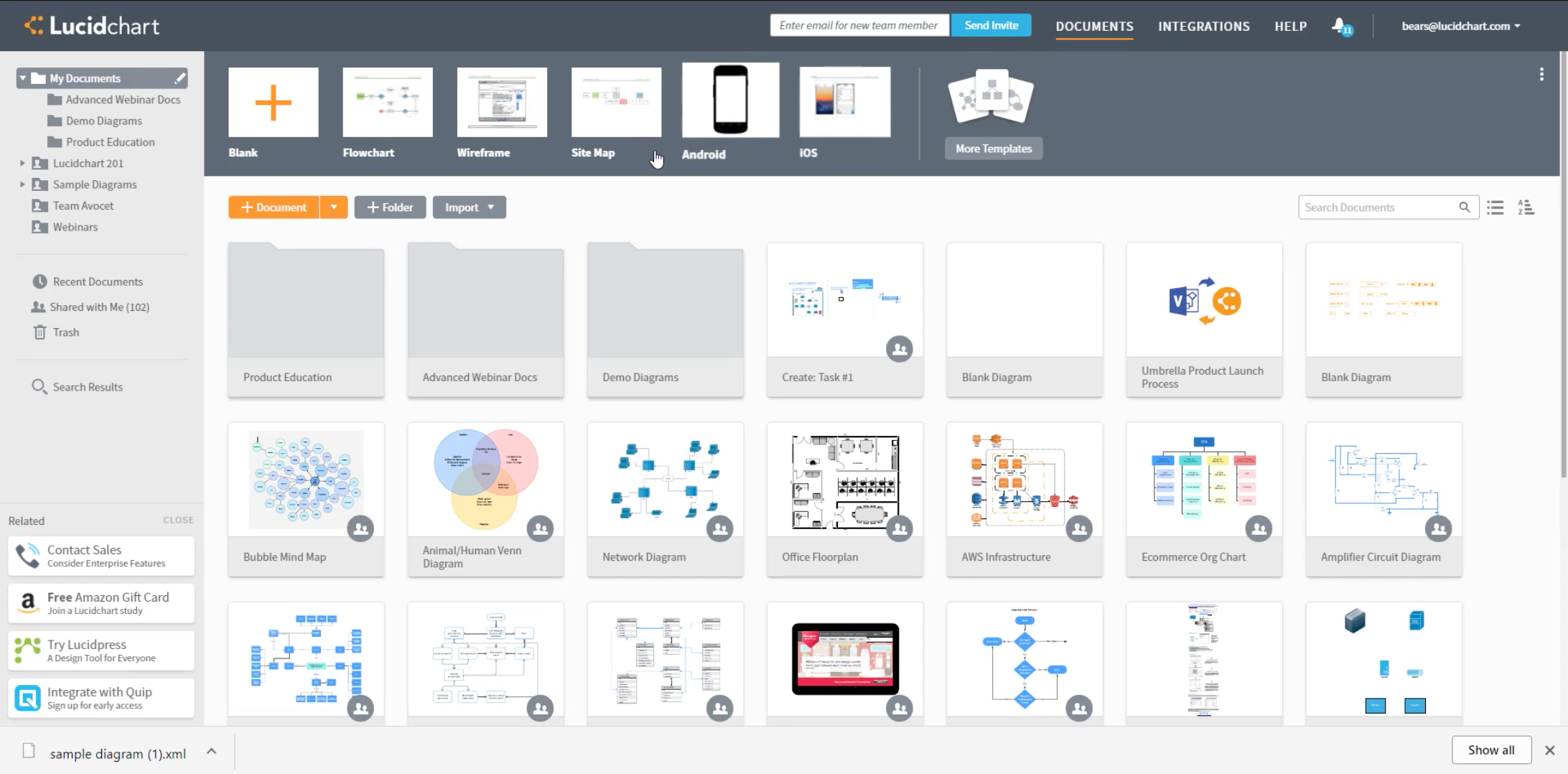
- #Lucidchart vs update#
- #Lucidchart vs pro#
- #Lucidchart vs software#
- #Lucidchart vs trial#
- #Lucidchart vs Offline#
#Lucidchart vs software#
Gliffy is more focused on catering to software developers. Lucidchart also offers information on how you can use their diagrams in various business aspects, such as HR, IT, process development, and sales. Gliffy is for users from small businesses all the way up to large enterprises, while Lucidchart works for individuals to corporations. Lucidchart is used by more types of people than Gliffy. Let’s dive deep and compare all of their perks and services. Gliffy and Lucidchart have been in a heated competition since they both emerged on the scene. Like Lucidchart, it’s easy to use, drag and drop, and compatible with Confluence and Jira. Gliffy is the other titan in the diagramming tool industry. Lucidchart is easy to use for even the most technically challenged, and can integrate well with many of your favorite apps and operating systems. Lucidchart is one of the most popular diagramming tools on the market, and for good reason. From flowcharts to mind maps, diagrams are used to organize, collaborate, and track progress on projects or plans. Both of these services provide easy-to-use diagramming tools for all types of projects. However, it will unlock all the collaborative features.Do you often work on large, complicated projects by yourself or with a team? Chances are you’ve heard of LucidChart and Gliffy.

Lastly, the Team version costs whooping $27 per month.
#Lucidchart vs pro#
The Pro plan costs $10 per month, it is limited to a single user, but you can now export and import in Visio formats. The Basic one for $5 per month has a space limit of 100MB, but it allows you to use all the available templates and shapes. Lucidchart has three paid versions: Basic, Pro, and Team.
#Lucidchart vs trial#
But if you have only occasional diagramming needs, this may be enough since the trial doesn’t expire. There’s only 25MB of space, and you can have only three documents, each allowed to have up to 60 objects.

The free trial of Lucidchart has many more limitations. One hundred users are the maximum, and this subscription costs $795. For a team of 10 people, you’ll pay $10 per year. What’s great about the free version of Draw.io is that there are no document limitations, and you can draw as much as you like. The fact that you can see the edits of all your team members in real-time makes this collaboration not only seamless but also unique. It’s not any more complicated than Google Docs – you get a shareable link to the documents, or you can enter the email IDs of your team members and pick the type of access you’ll give them. Also, users can share content only if they’re connected to their Google Drive accounts.Īlthough Lucidchart supports real-time collaboration only in the paid version, it has options for version tracking and group chat that takes communication to a whole other level. It’s quite hard to tell which users have made the updates, and it doesn’t offer shape-specific comments.
#Lucidchart vs update#
Although Draw.io allows multiple users to comment on and update diagrams simultaneously, this feature is not that intuitive. If you’re aiming for perfect symmetry, then Lucidchart’s minor details, such as the distance from margins and the distance between two nearby components are equally important.Ĭollaboration with team members is possible on both diagramming tools, but there are significant differences. But Lucidchart’s “ Feature find“ tool, intuitive guides, gridlines, dynamic formatting tools, and drag-and-drop shapes will allow users of all experience levels to venture further into more complex diagrams.Īnother cool thing is that when you move a particular component, Lucidchart shows you the coordinates. If you know what shapes you’ll need beforehand, this is more than helpful.ĭraw.io’s basic shape and line combinations are super easy to use. There’s also a pretty cool click-and-get feature: required shapes appear on the canvas right after you click on them.

A clearly defined grid makes arranging objects incredibly simple. Ease of Use and Beyond Drawingĭraw.io’s interface closely resembles Google’s online office applications and is very easy to learn. Of course, you’ll have to save the files on your device, not the cloud.
#Lucidchart vs Offline#
It’s probably the right place to mention one of Draw.io’s unique features – the offline version. Export flexibility has always been pretty much the same. But then they’ve picked up the pace and included Gliffy, Visio, and even Lucidchart. Regarding Draw.io’s import flexibility, they’ve started with shared platforms such as Google Drive, Trello, Dropbox, and GitHub. Lucidchart also has many export options, such as SVG vectors, image files, PDF, etc. The list includes OmniGraffle, Gliffy, and – Draw.io. But that’s not the end of Lucidchart’s import flexibility – it also supports import from a lot of other popular diagramming tools.


 0 kommentar(er)
0 kommentar(er)
